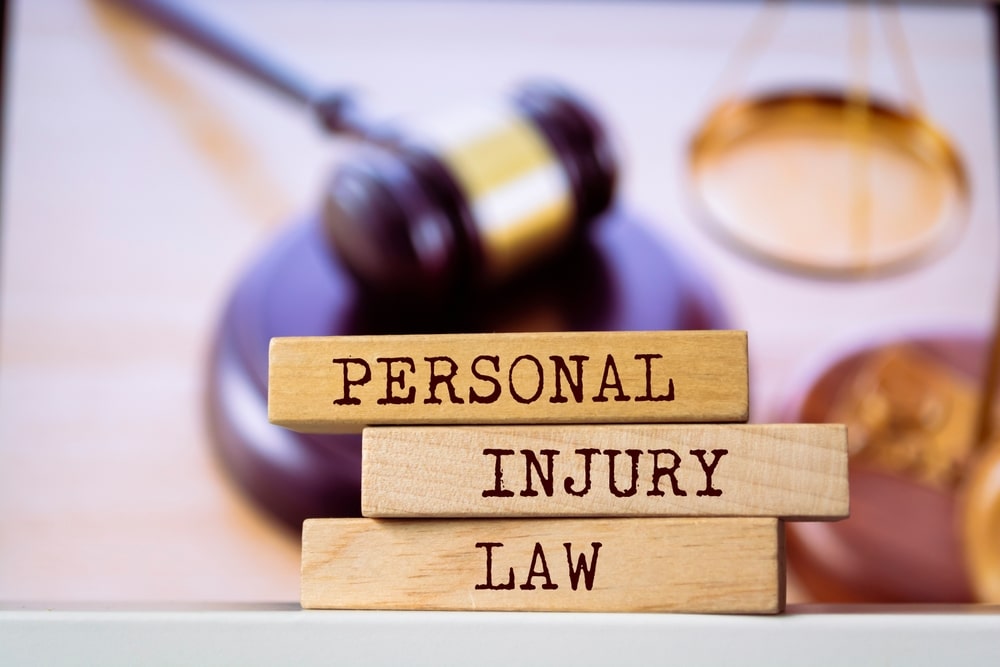January 24, 2024
Explaining No-Fault Insurance in Tennessee: Its Impact on Pedestrian Accident Claims
No-fault insurance is a system of automobile insurance that is designed to speed up the claims process and reduce legal costs by removing the need for blame to be assigned after an accident. Under no-fault insurance laws, drivers are typically compensated by their own insurance company for losses resulting from a collision, regardless of which party is at fault. This framework aims to provide a more efficient way to cover medical expenses, lost income, and potentially other costs without the necessity of proving liability.
When it comes to pedestrian accidents, the role of no-fault insurance is particularly significant. Pedestrians, when struck by a vehicle, can face severe injuries and substantial economic losses. Since no-fault insurance covers the insured party without consideration of fault, pedestrians in no-fault insurance states may find that some of their immediate medical costs and related expenses are covered under the driver’s policy. However, the specific protections and limitations of no-fault insurance can vary widely from one jurisdiction to another, affecting the compensation that pedestrians can receive after an accident.
Understanding no-fault insurance’s place in pedestrian accidents requires a look at both the general principles of such coverage and the nuances of state-specific regulations. Insurance policyholders and pedestrians alike benefit from recognizing the extent of coverage, the process for filing a claim, and the potential limitations of no-fault insurance. This knowledge is essential for navigating the aftermath of an accident with a clear awareness of the support available and the steps required to access it.
Understanding No-Fault Insurance
No-fault insurance offers a prompt payment system for financial losses due to accidents, regardless of fault. It aims to reduce legal costs by limiting the circumstances under which accident victims can sue.
Overview of No-Fault Insurance Systems
No-fault insurance systems are structured to allow policyholders to recover financial losses from their own insurance company. This model eliminates the need for determining fault in the event of an accident for the purpose of settling claims. Coverage typically includes medical expenses, lost income, and the costs of funeral expenses in the case of fatal accidents. Property damage, however, often still requires the traditional fault-based insurance process.
- Direct Compensation: Policyholders receive compensation directly from their insurer.
- Efficiency: Reduces the time and resources spent to determine fault.
- Support: Provides quick financial support for covered losses.
Key Principles of No-Fault Insurance
The core concept of no-fault insurance is that it provides benefits regardless of who caused the accident. Policyholders do not have rights to sue for additional compensation unless the case meets “serious injury” thresholds established by the jurisdiction’s legislation, which often limits lawsuits to severe injuries or death.
- Coverage Limits: There are predetermined limits on the benefits one can receive.
- Sue Thresholds: Legislation defines thresholds for severe cases that open the possibility of a lawsuit.
- Mandatory Policy: In many no-fault jurisdictions, this type of coverage is compulsory.
No-Fault vs. Tort Liability Insurance
No-fault insurance contrasts with tort liability insurance, where fault must be established before any claim payment. Under tort liability, the at-fault party, or their insurer, is financially responsible for the victim’s losses. This system can lead to more lawsuits, as fault determination becomes critical for compensation.
Tort Liability Insurance:
- Fault-Based: Compensation is linked to establishing who is at fault.
- Potential for Litigation: More likely to result in lawsuits for damages.
- Varied Damages: Compensation can include pain and suffering, which is not covered by no-fault insurance.
No-Fault Insurance:
- Not Fault-Based: Benefits are paid without regard to fault.
- Limited Litigation: Lawsuits are generally only an option for serious cases.
- Defined Benefits: Typically limited to specific economic losses.
No-Fault Insurance and Pedestrian Accidents
No-fault insurance provides specific coverage for pedestrians involved in vehicle accidents regardless of who is at fault. Understanding the nuances of this insurance is crucial for pedestrians to ensure they are adequately protected.
Pedestrian Coverage Under No-Fault Insurance
In states with no-fault insurance laws, pedestrians struck by a vehicle may receive medical and other related benefits from the driver’s no-fault policy. These benefits, known as Personal Injury Protection (PIP), typically include:
- Medical expenses: Payments for hospital bills, doctor visits, and necessary medical treatments.
- Lost wages: Compensation for lost income due to the inability to work following the accident.
- Death benefits: Financial support provided to the beneficiaries of a pedestrian who has died as a result of the accident.
The extent of coverage can vary based on the policy’s specifics and the state’s no-fault insurance regulations.
Filing a Claim as a Pedestrian
A pedestrian involved in an accident must be prompt in filing a no-fault claim. The process generally involves:
- Identifying the applicable policy: This may be the driver’s no-fault insurance policy.
- Reporting the accident: The pedestrian should report the incident to the driver’s insurance company as soon as possible.
- Completing the claim forms: Required documentation typically includes a claim form and proof of injury, such as medical records.
- Following up: The pedestrian should monitor the status of the claim and provide any additional information requested by the insurance company.
If coverage is denied or insufficient, the pedestrian may need to seek further legal advice to understand additional options.
Benefits and Limitations of No-Fault Insurance
No-fault insurance aims to reduce litigation by providing quick payouts for medical expenses but imposes limits on the right to sue for additional damages.
Medical Expenses and Rehabilitation Costs
Medical Coverage: No-fault insurance typically covers medical expenses related to the accident regardless of who is at fault. This includes:
- Hospital bills
- Doctor’s visits
- Necessary surgeries
- Rehabilitation
Rehabilitation Costs: They often extend to rehabilitation expenses, which may encompass:
- Physical therapy
- Occupational therapy
- Other long-term care needs
Coverage is subject to policy limits, and individuals may foot expenses exceeding these thresholds.
Restrictions on Suing
Suing Thresholds: No-fault insurance places significant restrictions on the ability to sue. In many cases, a lawsuit is only possible if:
- Injuries reach a certain severity (determined by the state’s threshold)
- Medical expenses exceed a specific monetary threshold
Non-Economic Damages: The right to recover for non-economic damages like pain and suffering is typically limited under no-fault insurance. Recovery for such damages may require injuries to fall within defined categories deemed serious, such as:
- Permanent injury
- Significant disfigurement
- Loss of a body part
Comparative Analysis of No-Fault States
No-fault insurance systems allow policyholders to recover financial losses from their own insurance companies, regardless of who is at fault in an accident. In the context of pedestrian accidents, this system means that a pedestrian covered under their own no-fault policy can file a claim with their insurer for medical expenses and lost wages.
States with No-Fault Insurance:
- Florida
- Hawaii
- Kansas
- Kentucky
- Massachusetts
- Michigan
- Minnesota
- New Jersey
- New York
- North Dakota
- Pennsylvania
- Utah
Each state has unique provisions and limits. For example:
- Michigan offers unlimited lifetime medical benefits for auto accident injuries, while others like Florida cap the benefits.
- Kentucky, New Jersey, and Pennsylvania allow policyholders to choose between no-fault and traditional tort coverage.
Due to these variations, pedestrians’ experience with claims can greatly differ. In states with higher personal injury protection (PIP) limits, pedestrians might have more of their expenses covered.
Table: Sample PIP Limits in No-Fault States
| State | PIP Limit |
|---|---|
| Michigan | Unlimited |
| Florida | $10,000 |
| New York | $50,000 |
The effectiveness of no-fault insurance in mitigating litigation and compensating victims swiftly varies. Proponents argue these states see fewer lawsuits and quicker payouts. Critics point out that premiums can be higher and fraud more prevalent.
Pedestrians in no-fault states should understand their policy terms and the specific rules governing pedestrian accidents to navigate the post-accident process effectively.
Steps to Take After a Pedestrian Accident in Tennessee
When involved in a pedestrian accident, timely and appropriate steps can significantly affect the outcome of insurance claims and legal matters. Each action helps protect one’s rights and enables a smoother process for compensation.
Immediate Actions at the Accident Scene
Safety First:
- Ensure everyone involved is out of danger and not obstructing traffic.
- Use hazard lights or road flares to warn oncoming traffic if necessary.
Documentation:
- Call the police to report the accident.
- Collect names, contact details, insurance information, and vehicle details from all parties involved, including witnesses.
- Take photos of the scene, injuries, and vehicle positions.
Seeking Medical Attention
Assessment and Records:
- Seek immediate medical attention, even if injuries seem minor, as symptoms may appear later.
- Keep a record of medical visits, treatments, diagnostics, and any related expenses.
Reporting the Accident
Police and DMV Reports:
- Ensure a police report is filed; get a copy for personal records.
- Report the accident to the state Department of Motor Vehicles if required by law.
Timeliness:
- Note any deadlines for reporting accidents in the state where the incident occurred.
Consulting with an Insurance Agent
Early Communication:
- Notify one’s insurance provider about the accident as soon as possible.
Policy Review:
- Review one’s insurance policy to understand coverage details.
- Discuss the accident specifics and potential coverage with the agent.
Legal Options Beyond No-Fault Insurance
No-fault insurance covers medical expenses and loss of income for an individual regardless of who caused the accident. However, in cases of severe injuries or when damages exceed certain thresholds, pedestrians may need to explore legal options beyond basic no-fault coverage.
When to Consider Legal Counsel
Pedestrians should seek legal counsel if they sustain serious injuries that result in long-term impairment or significant financial loss. An attorney can help determine if the injuries meet the state’s threshold for stepping outside the no-fault system. Legal counsel is crucial when dealing with complex cases or when negotiating with insurance companies to ensure fair compensation is received.
- Factors to seek legal counsel include:
- Serious injuries with long-term effects
- Disputes with insurance companies
- Claim exceeds no-fault policy limits
Understanding Thresholds for Suing
Suing outside of a no-fault system is usually contingent upon meeting specific criteria known as “thresholds.” These thresholds vary by state but often include conditions like disfigurement, loss of a limb, or a significant disability.
- Common thresholds that may allow a pedestrian to sue:
- Death
- Permanent disability
- Significant disfigurement
- Fractured bones
- Exceeding a predetermined monetary amount in medical bills
Individuals involved in pedestrian accidents should be aware of the thresholds in their state and consult an attorney to navigate the complexities of potential lawsuits.
Evaluating Your Insurance Policy in Tennessee
When reviewing one’s insurance policy, it is crucial to understand the coverage details. Policyholders should confirm if their policy includes Personal Injury Protection (PIP) or Medical Payments (MedPay), which are essential in no-fault states. They cover medical expenses for the insured, regardless of who caused the accident.
Key aspects to check include:
- Coverage Limits: Determine the maximum amount your policy will pay for a single accident.
- Deductibles: Know your out-of-pocket costs before the insurance covers the expenses.
- Exclusions: Identify what is not covered. Some policies may exclude specific scenarios or types of injuries.
Policyholders should also ascertain if their policy has pedestrian coverage, which can provide financial protection if they are struck by a vehicle as a pedestrian.
Documentation is vital. They should have easy access to their:
- Policy declarations
- Coverage details
In the event of an accident, they must promptly report the incident to their insurer. Maintaining open communication can facilitate a smoother claim process.
Lastly, policyholders are advised to review their insurance coverage annually or after significant life events. This practice ensures their policy remains aligned with their current needs.
Safety Measures and Preventive Actions
Pedestrians, drivers, and policymakers can adopt several safety measures and preventive actions to reduce the risk of pedestrian accidents.
For Pedestrians:
- Wear reflective clothing: Enhances visibility, especially at night or in poor weather conditions.
- Use crosswalks or intersections: The safest points to cross roads.
- Stay alert: Avoid distractions such as mobile devices when walking near traffic.
For Drivers:
- Adhere to speed limits: Slower speeds improve reaction time and reduce impact severity.
- Yield to pedestrians: Always give way at crosswalks and intersections.
- Be vigilant during poor visibility: Extra caution is needed in adverse weather and at night.
For Policymakers:
- Implement traffic calming measures: Speed bumps or narrower roads to moderate vehicle speeds.
- Enhance street lighting: Improves visibility of pedestrians at night.
- Improve sidewalk infrastructure: Encouraging walking on sidewalks rather than the street.
Technological Measures:
- Crosswalk illumination: Increases pedestrian visibility.
- Pedestrian detection systems: Advanced systems in vehicles to alert drivers of pedestrian presence.
Each of these measures contributes to creating a safer environment for pedestrians and reducing the likelihood of accidents, thereby mitigating the application of no-fault insurance policies in such circumstances.
Frequently Asked Questions
Understanding no-fault insurance and its implications for pedestrian accidents raises several common questions about coverage, claims, and responsibilities.
How does no-fault insurance work in pedestrian accidents?
No-fault insurance generally allows pedestrians hit by a vehicle to file a claim for medical expenses and lost wages with the driver’s insurance company, regardless of who was at fault for the accident.
What does no-fault insurance cover in the event of a car accident involving a pedestrian?
In the event of an accident with a pedestrian, no-fault insurance covers medical expenses, lost income, and other out-of-pocket costs incurred by the pedestrian, up to the policy limits.
Can a pedestrian file a claim under no-fault insurance in states like Virginia?
States like Virginia follow a traditional fault-based system, not a no-fault system. Thus, a pedestrian would typically file a claim against the driver’s liability insurance or use their own coverage depending on the situation.
What are the advantages of no-fault insurance for pedestrians hit by a vehicle?
No-fault insurance typically offers faster payouts for medical expenses and lost wages since the claim does not depend on establishing fault, which can be beneficial for pedestrians needing immediate financial support after an accident.
In a no-fault state, who is responsible for the medical expenses of a pedestrian after an accident?
In a no-fault state, the pedestrian’s own personal injury protection (PIP) coverage or the driver’s PIP may be responsible for initial medical expenses, irrespective of who caused the accident.
How can a pedestrian’s insurance claim be affected by no-fault regulations following an accident?
A pedestrian’s insurance claim in no-fault states can be limited by the coverages and limits chosen. The pedestrian cannot sue for non-economic damages like pain and suffering unless the case meets certain thresholds.




